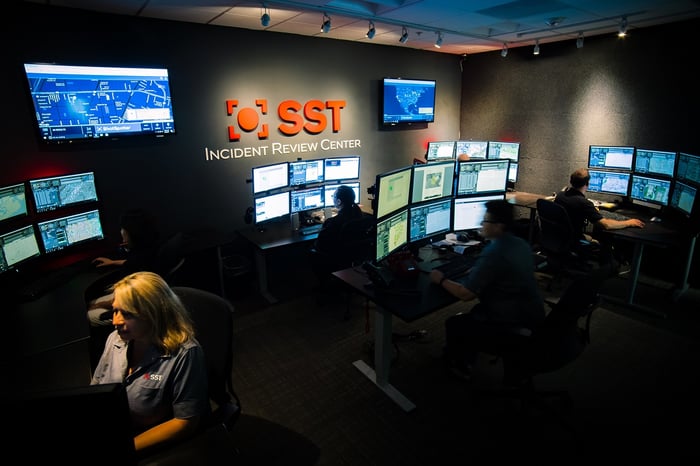I'd like to introduce readers to a stock The Motley Fool has yet to cover: ShotSpotter (SSTI 0.45%), a gunfire detection and location technology company. It's the only pure-play, publicly-traded company in this space, to my knowledge.
ShotSpotter stock (yeah, that's a mouthful) has been soaring, driven largely by the increased attention it's received as a result of recent mass shootings in the U.S. Shares have surged 124% in 2018 as of this writing, versus the S&P 500's flat performance, and have rocketed 186% since the company went public in June 2017.
The Silicon Valley-based company is likely flying under most investors' radars, because it's relatively new to the public markets and has a market capitalization of just $325 million, as of this writing. I came across it while playing with a stock screener and thought it seemed worth digging into once it was large enough to write about.
To be clear, I'm not calling ShotSpotter stock a "buy" -- the company's financial history as a public entity is limited, and it's too early to tell how well the management team will run a public company. That said, it's worth putting on your watchlist if you're comfortable investing in small companies that are on the verge of profitability.

Image source: Getty Images.
ShotSpotter's business
ShotSpotter, which was founded in 1996, calls itself the "leader in gunshot detection solutions." Its tech can help save lives by enabling police officers and other emergency responders to arrive at shooting scenes more quickly and with greater situational awareness. The company, which employs a software-as-a-service (SaaS)-based subscription business model, focuses mostly on outdoor systems, though it also offers indoor ones. Its services are primarily targeted at cities, mostly in the U.S., as well as college campuses, though it also views the energy infrastructure and public transportation markets as potential opportunities.
ShotSpotter has systems in more than 85 midsize and large cities, including eight of the country's largest. Its biggest deployments are in New York City and Chicago, which both have installations that cover about 60 square miles. Typically, cities will add to their coverage areas over time as budgets permit. Chicago, for example, expanded its coverage area four times, from three square miles to more than 60. Indeed, customer loyalty is high with revenue retention of 141% in 2017.
SpotSpotter has partnerships with Verizon, AT&T, and General Electric, which should help accelerate its growth as burgeoning "smart city" technology makes greater inroads into cities around the globe. These partnerships with major companies should also help protect ShotSpotter from increased competition.

ShotSpotter's Incident Review Center. Image source: ShotSpotter.
How the technology works
In a presentation from last month, the company shared details on how its service works:

Image source: ShotSpotter
I contacted the company to ask a few questions about its technology, namely where the sensors are installed and if artificial intelligence (AI) is used. CEO Ralph Clark said the outdoor sensors are typically installed on rooftops and on outdoor lighting fixtures and that the company currently doesn't use AI but is exploring the space.
Key financials
ShotSpotter has more than doubled its top line over the past two years with revenue coming in at $23.8 million in 2017. Gross margin has expanded from 30% in 2015 to 49% in 2017, with the company expecting to achieve profitability on a GAAP basis by the end of this year. The company is cash flow positive from an operational standpoint. And zero debt and $19.6 million in cash make for a solid balance sheet.
Another notable positive is that insider ownership has been increasing. In fact, the CEO bought 2,000 shares on the open market in December, which turned out to be great timing. Investors can often win by following insider money.
Data by YCharts.
On the flip side, short interest for the stock is high, which typically increases a stock's volatility. It has, however, edged down since mid-February, as the stock's rise since the shooting in Parkland, Florida, left some short-sellers scrambling to cover their positions.
Data by YCharts.
As is typical for such a fast-growing company, ShotSpotter stock is pricey, sporting a price-to-sales ratio of 13.7 times.
As I said at the beginning of this article, ShotSpotter is an interesting company to add to your watchlist if you're comfortable investing in smaller companies that are moving quickly toward profitability. There's a major need for the services this company provides, but investors should be aware of competition, which is currently limited in the company's core target market but will likely increase as more companies enter the smart city and Internet of Things industries.







